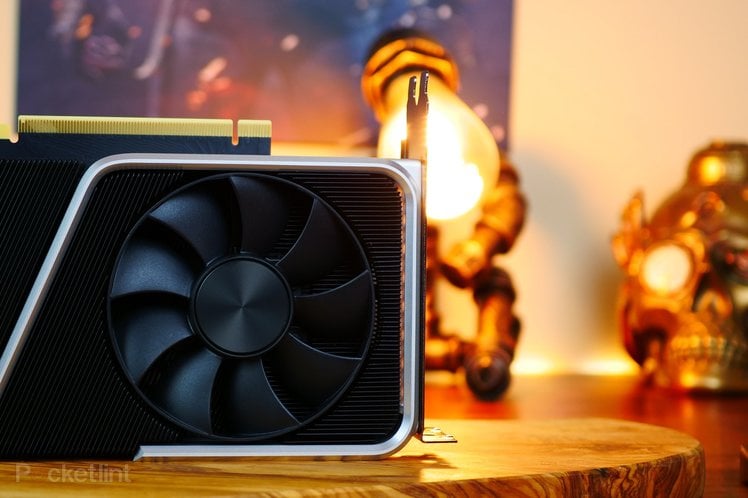
So you’ve got yourself a shiny new gaming PC or managed to grab a new graphics card, but do you know how to make the most of it?
By default, your gaming machine may not be giving you as much performance as you’d expect.
Aside from installing the latest graphics drivers, there are some surprisingly easy things you can do to improve your frames per second in-game and overall performance.
Follow this guide for some simple tips on settings you can change within Windows 10 and relevant software to tweak your performance and get a nice boost.
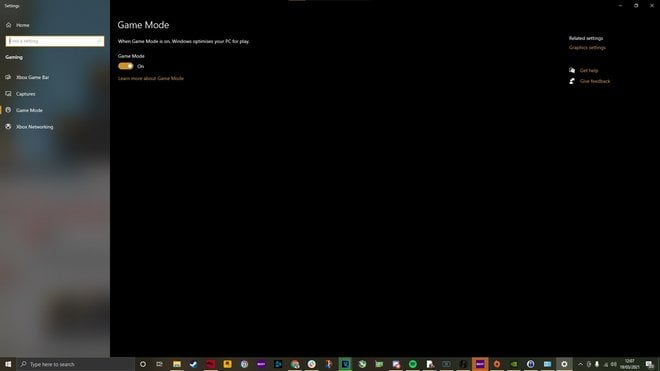
1. Turn on Game Mode
Window’s Game Mode is one of the easiest things you can do to improve settings. Telling Windows that you’re a gamer and getting the operating system to optimise performance for you is one.
For this setting, you’ll need the latest version of Windows 10 (or Windows 11), but beyond that, it’s dead simple to turn on Game Mode.
To turn on Game Mode follow these steps:
- Press the Start button on your keyboard and type Game
- Click Game Mode Settings when it appears at the top of the Start menu
- Click the button to turn on Game mode
Easy.
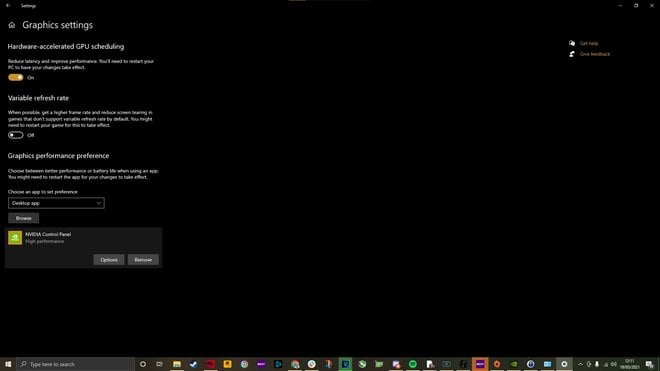
2. Turn on Hardware-accelerated GPU scheduling
With the right equipment (i.e. a new GPU and Windows 10/11) you can enable Hardware-accelerated GPU scheduling in order to reduce latency and improve performance. This is supported by both AMD and Nvidia GPUs and gives you another way to boost performance.
There are two parts to this setting adjustment, but they’re easy to do. In this instance, we’re using Nvidia graphics, but similar steps are available for AMD:
- Press the Start button and search for Graphics Settings
- Then click to turn on Hardware-accelerated GPU Scheduling
- Scroll down and view the settings for “graphics performance preference” from there you can choose the app to set your preference. For Nvidia, this is the Nvidia Control panel. You can select this as a desktop app or Microsoft store app via the dropdown
- Click on the app, click options and select high performance
- Repeat for any game where you want maximum performance
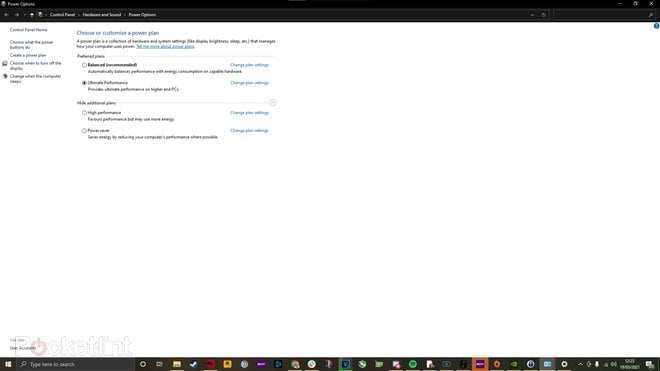
3. Change your power settings
Windows naturally tries to minimise your power use, whether you’re gaming on a desktop or on a powerful gaming laptop. This is obviously useful if you want to keep your energy bills down, but it may be holding you back from maximum FPS and full enjoyment of your gaming machine.
It’s easy enough to adjust though:
- Hit the Start button and type Power
- Click on Power & Sleep settings
- On the right-hand side of the window that pops up, click additional power settings
- From there select either high performance or ultimate performance to ensure you have enough power for your game
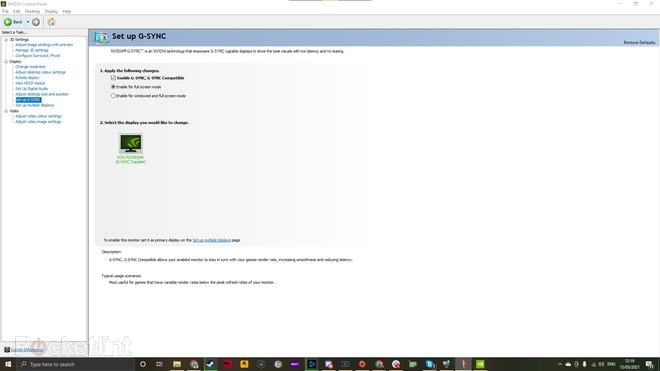
4. Turn on G-Sync
If you have a G-Sync compatible gaming monitor then it’s worth checking that G-Sync is set up correctly. Though this isn’t necessarily going to give you a performance boost, it will improve your overall experience by giving you smoother and more eye-pleasing visuals.
To do this right-click on the desktop, open Nvidia Control Panel and find “Setup G-Sync” on the left-hand side menu. From there you can choose to enable G-Sync if it isn’t already enabled.
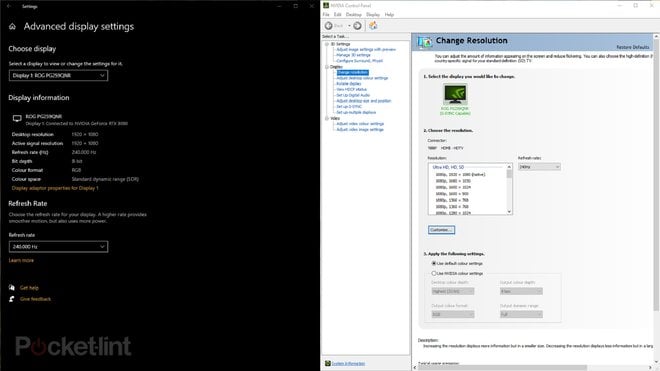
5. Ensure you’re running the right refresh rate
If you’re trying to maximise your FPS, then chances are you have a good gaming monitor with a fast refresh rate. But simply plugging one of these monitors in isn’t enough on its own to give you the best performance.
Windows doesn’t always default to using the maximum refresh rate. So this is another setting you’ll need to manually change.
There are two ways to do this, the first is through Windows display settings:
- Right-click on your desktop and click display settings
- Scroll down until you see “advanced display settings”
- Then scroll down to refresh rate and click the dropdown. From there select your monitor’s maximum refresh rate.
Alternatively use Nvidia’s Control Panel:
- Right-click on your desktop and click the Nvidia Control panel
- Under “display” find the option for “change resolution”
- From there click the refresh rate drop-down and select the highest possible setting.
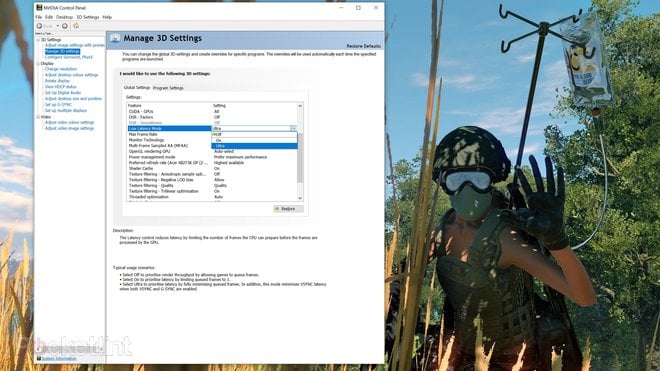
6. Turn on Ultra-Low Latency Mode
To get the best performance, the games you’re playing ideally need to support Nvidia Reflex, but it’s also possible to give your system a boost and reduce latency with Nvidia’s Ultra-Low Latency Mode.
This setting is accessible from the Nvidia Control Panel:
- Right-click on your desktop and click Nvidia Control Panel
- On the left navigate to manage 3D settings
- Scroll down through Global Settings and find “Low Latency Mode” – then select Ultra from the drop down
While you’re here it also pays to tell the control panel to prefer maximum performance too. Scroll down a bit further and find “power management mode” and select “prefer maximum performance” from the drop-down.
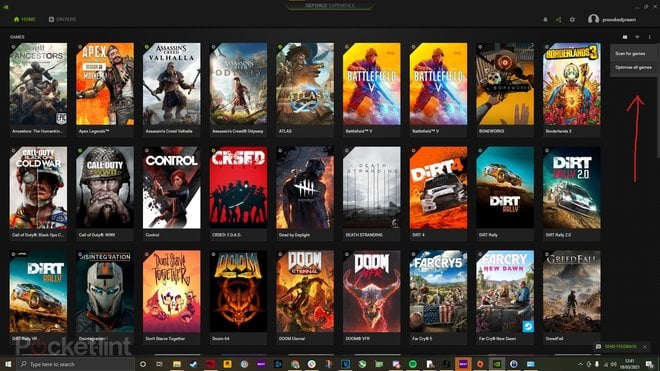
7. Optimise games with GeForce Experience
If you’re running an Nvidia graphics card then it’s well worth downloading GeForce Experience if you don’t have it installed already.
This tool not only gives you access to easy driver downloads and the ability to capture game footage with Nvidia Shadowplay and Ansel, but it also lets you optimise performance in various ways too.
Open GeForce experience and you have the opportunity to scan your system for games then simply click to optimise all games. You can also access these settings by clicking the cog, then clicking to automatically optimise newly added games.
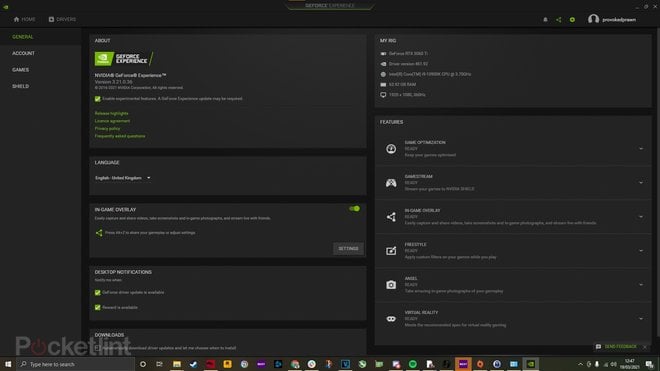
8. Experimental Features and tuning
Within Nvidia GeForce Experience, click on the settings cog and click on the general settings. There you’ll see an option to “Enable experimental features”. Tick that and you can then access various settings by pressing ALT+Z.
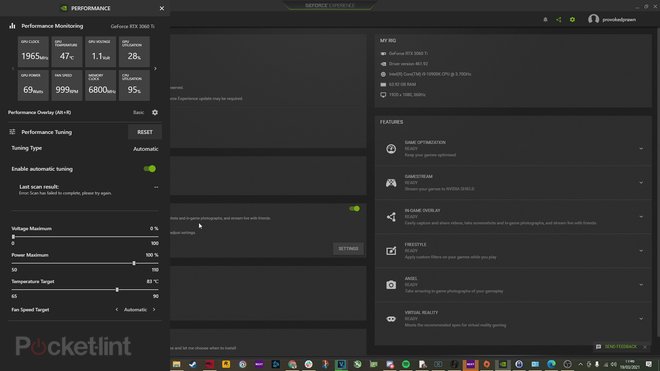
With the overlay option you’ll find a button on the right marked “performance” click that and you’ll then have access to a sidebar with various performance monitoring settings.
About halfway down there you’ll also find a setting marked “enable automatic tuning”. Ticking this allows Nvidia GeForce Experience to automatically overclock your graphics card to get even more performance out of it with just a couple of clicks. Click to activate it, accept the warning and then wait for the scan results.
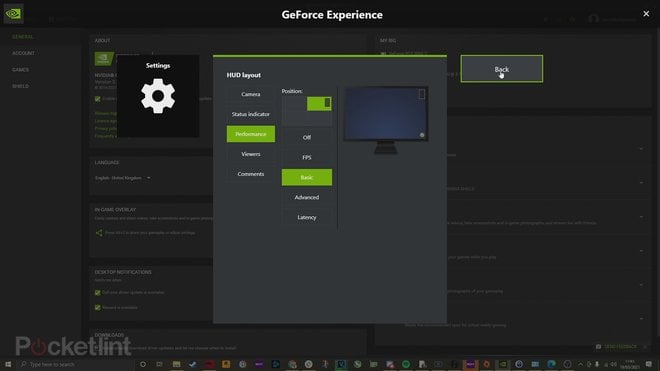
Another option here is to have a performance overlay with basic, advanced or latency displayed on your screen. This will allow you to see the fruits of your efforts in ticking all the different buttons to adjust the settings.
The latency part of this performance monitoring is more useful when using Nvidia Reflex, but the basic and advanced ones will be helpful for keeping an eye on your system while you game to make sure you’re getting the FPS you should be.
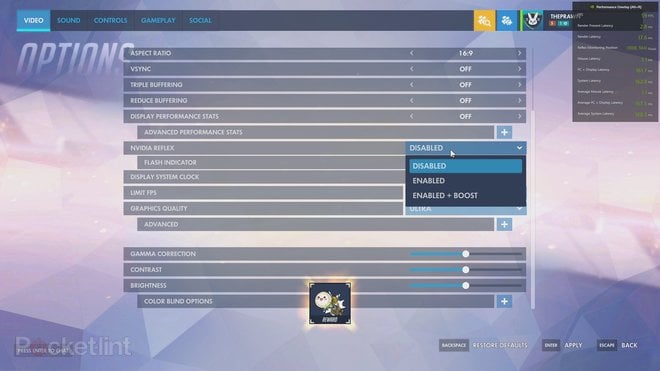
9. Activate DLSS and Nvidia Reflex
There are a couple of extra settings that you can activate in particular games. These include Nvidia Reflex which is designed to minimise latency and DLSS which uses AI to improve FPS in clever ways.
Unfortunately only some games support these settings at the moment, but the number is increasing regularly.
Deep Learning Super Sampling (aka DLSS) is the most useful of these two settings when it comes to improving your FPS. This takes the pressure off your graphics card by using AI to help upscale the image – meaning the graphics card can render a low quality image initially.
This is akin to running your game at 1080p instead of 4K, even when you have a 4K screen but then using DLSS to upscale the image to 4K so you still see a 4K image but with the frames per second you’d get with 1080p. Or at least near to it anwyay.
It the game supports it, the DLSS settings usually include performance, balanced and quality modes. Quality gives the best looking imae, while performance gives maximum FPS but might not be as good looking.
Nvidia has improved DLSS recently and is constantly working to make it even better and help developers roll it out to more games too.
10. Activate AMD FidelityFX Super Resolution
If you don’t own an Nvidia graphics card but instead use AMD then that’s no problem. AMD has a system called AMD FidelityFX Super Resolution. This is similar to Nvidia’s deep learning super sampling (DLSS) and is supported by a number of games.
